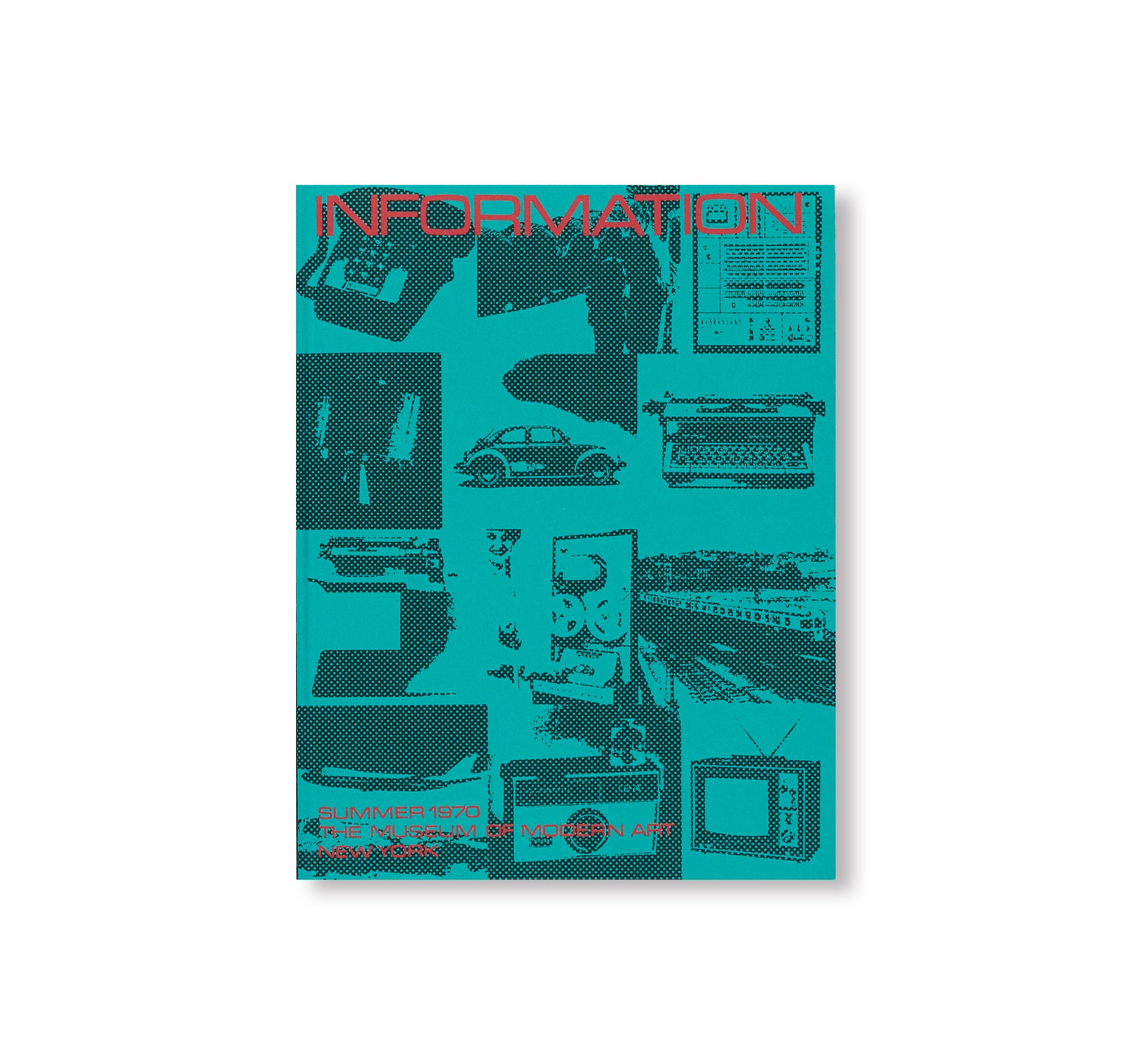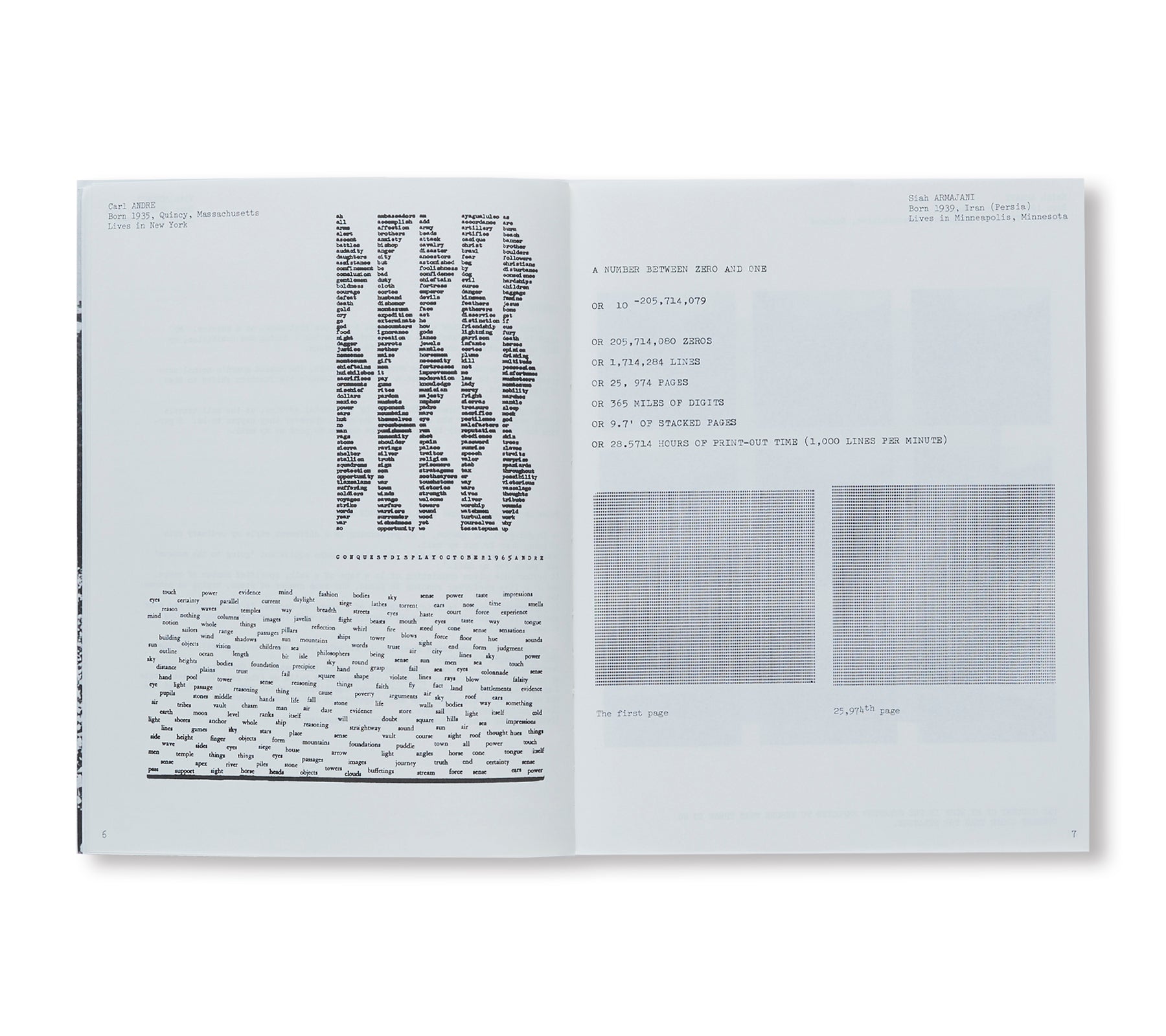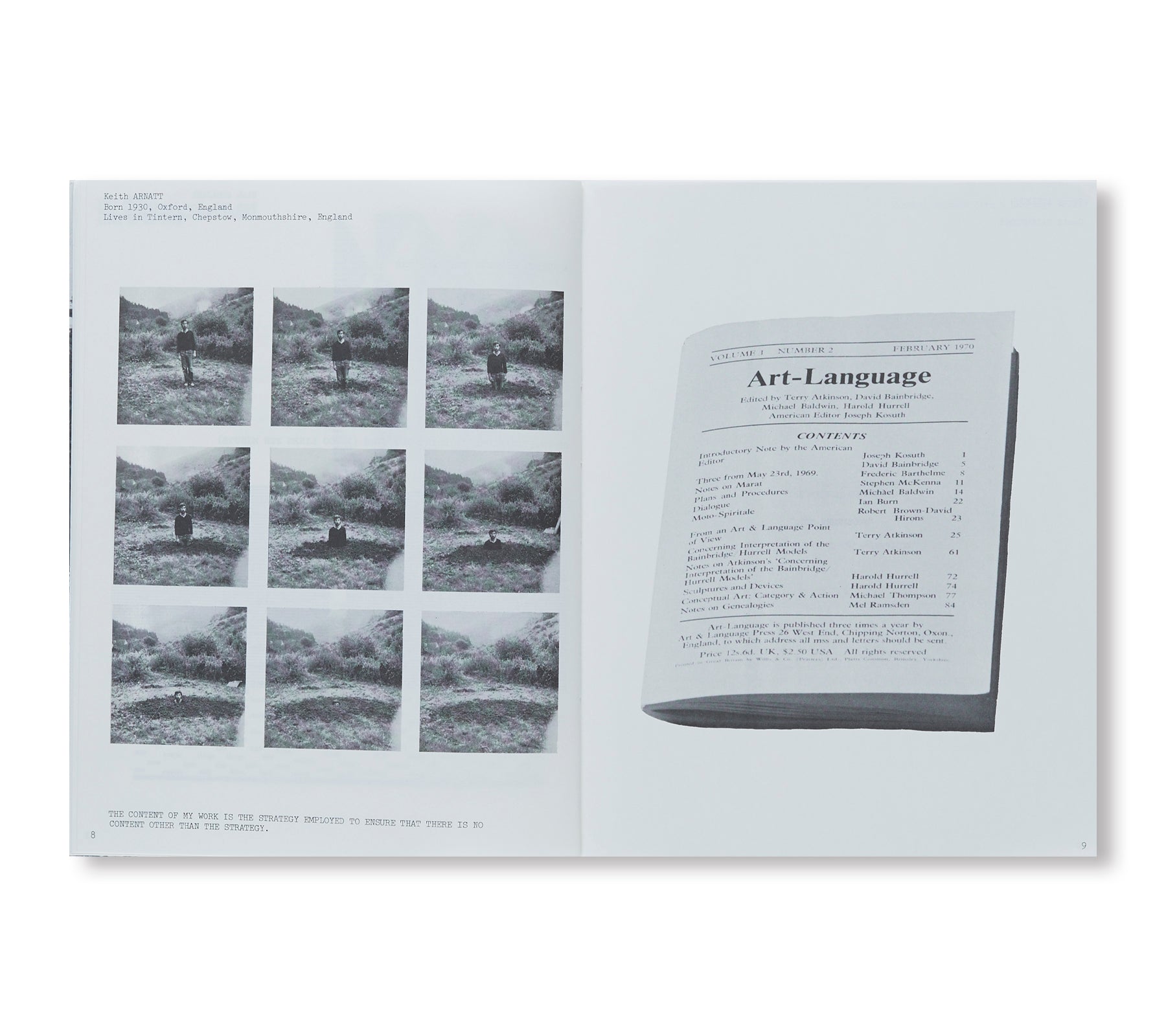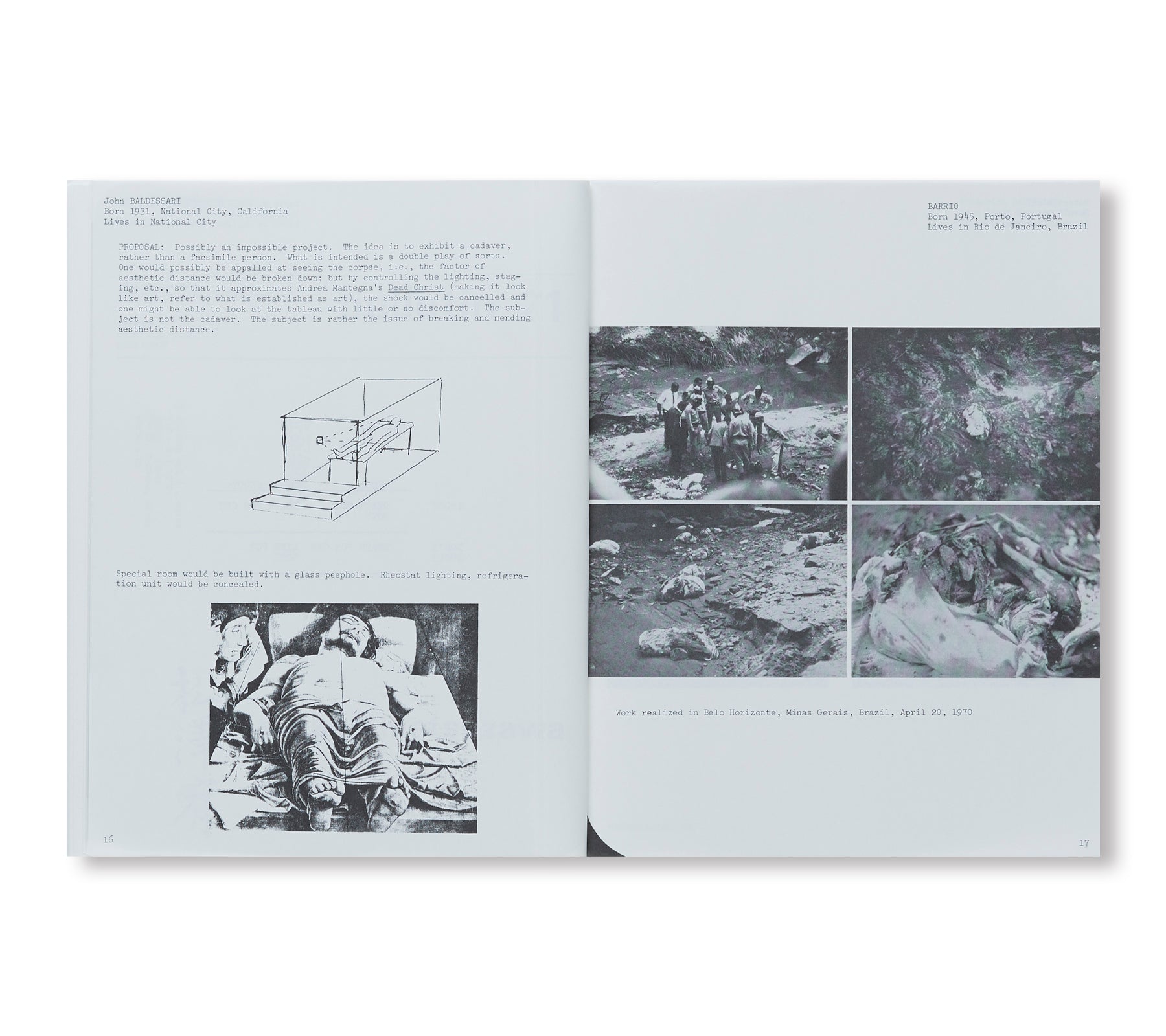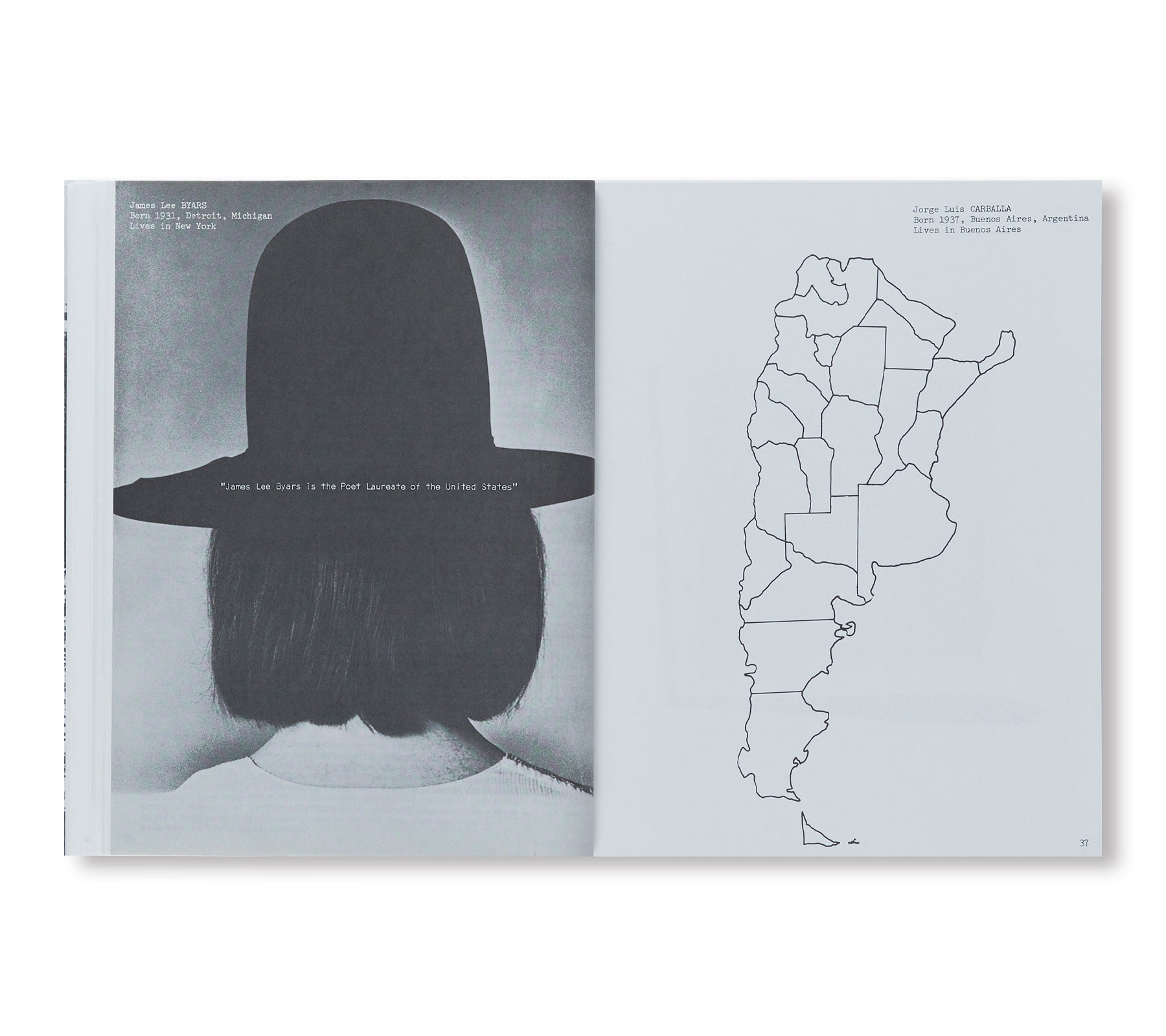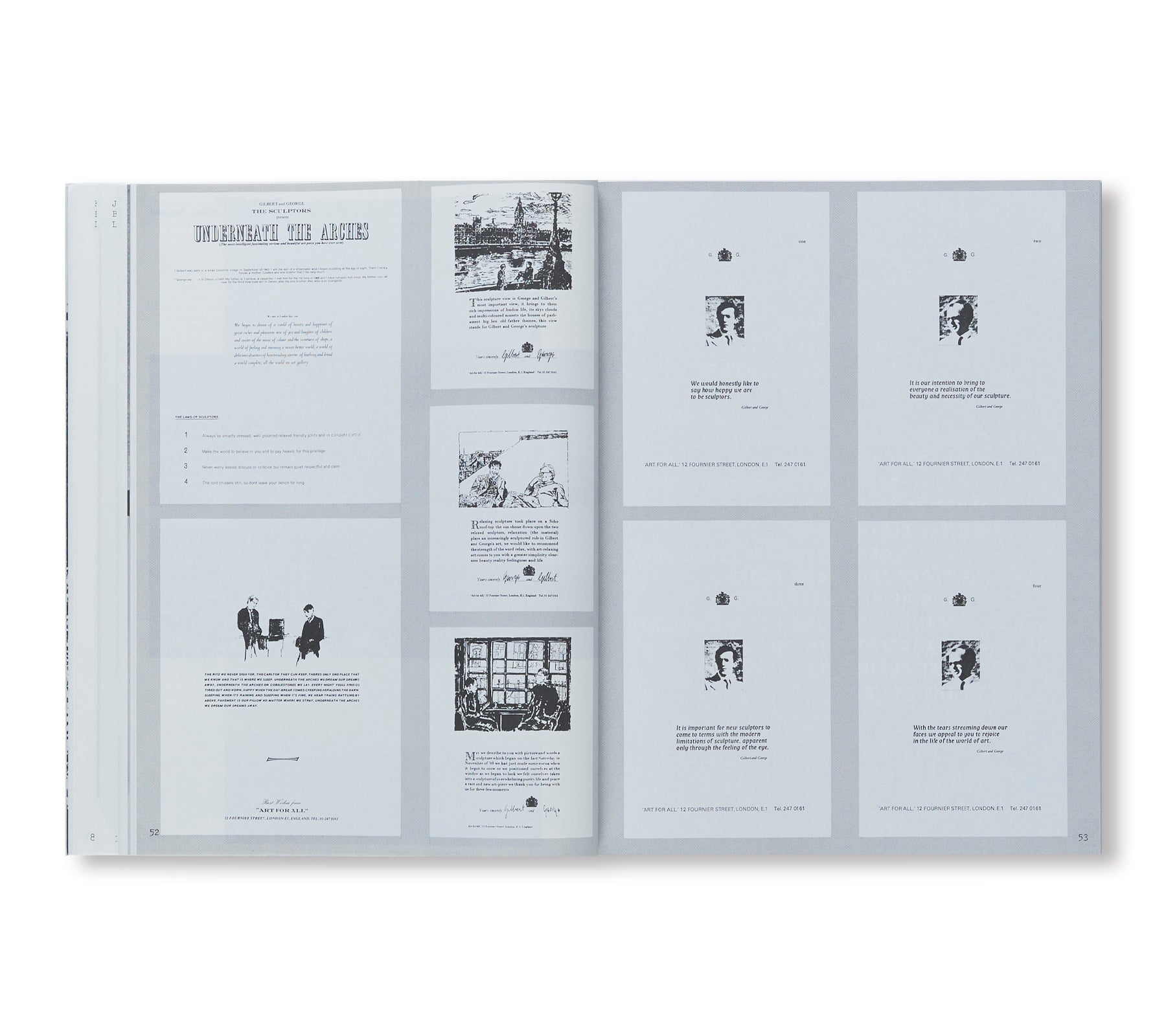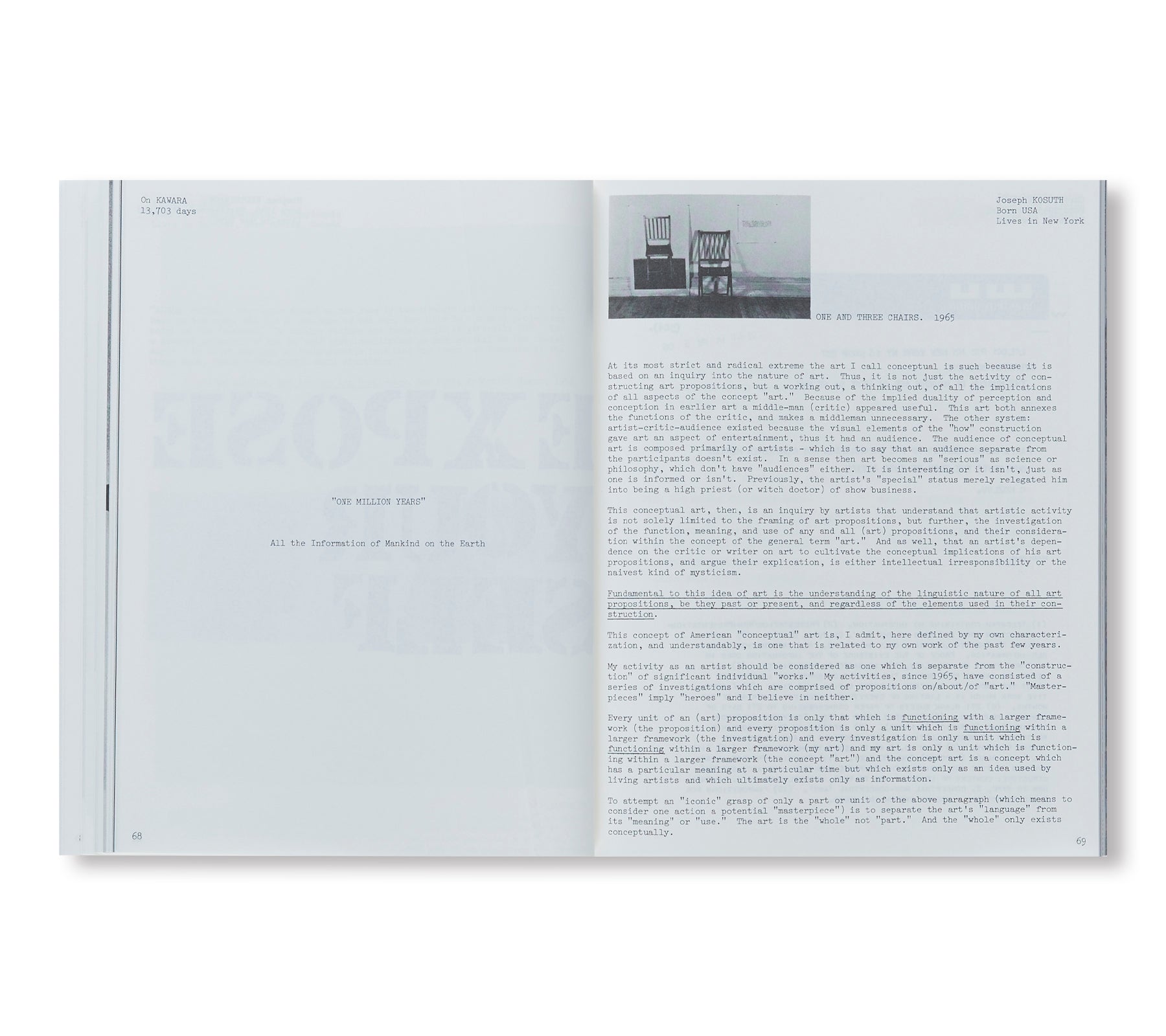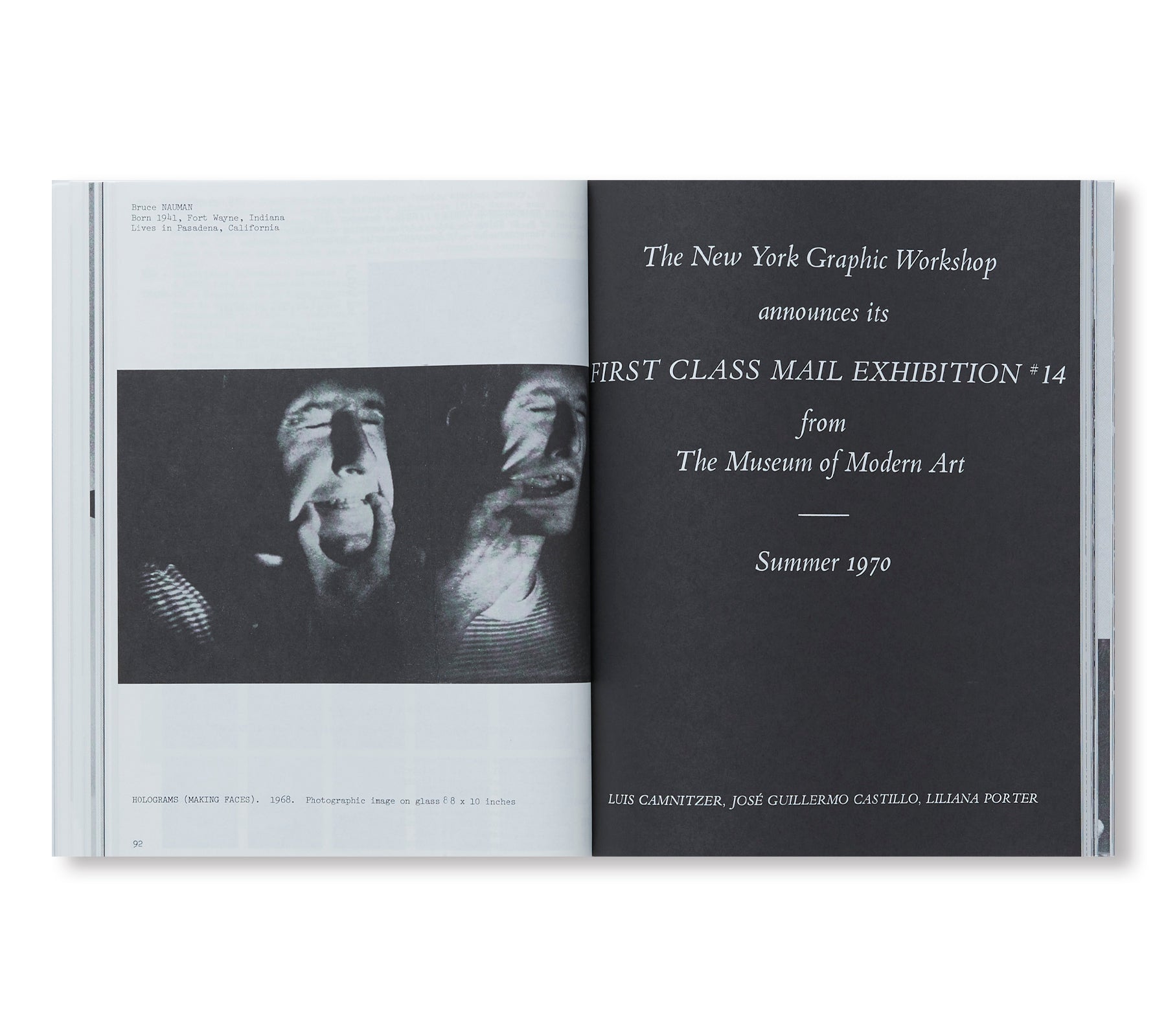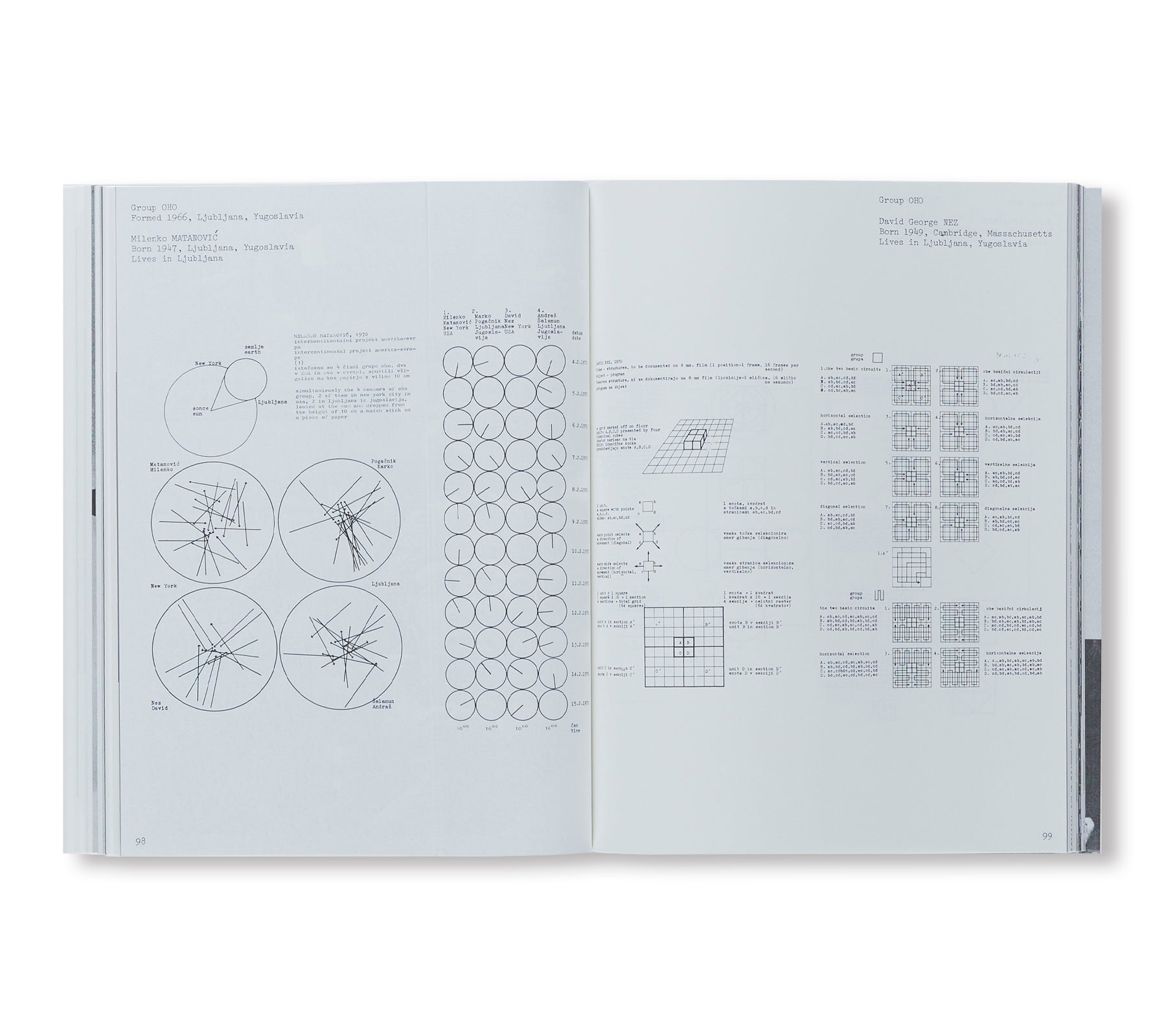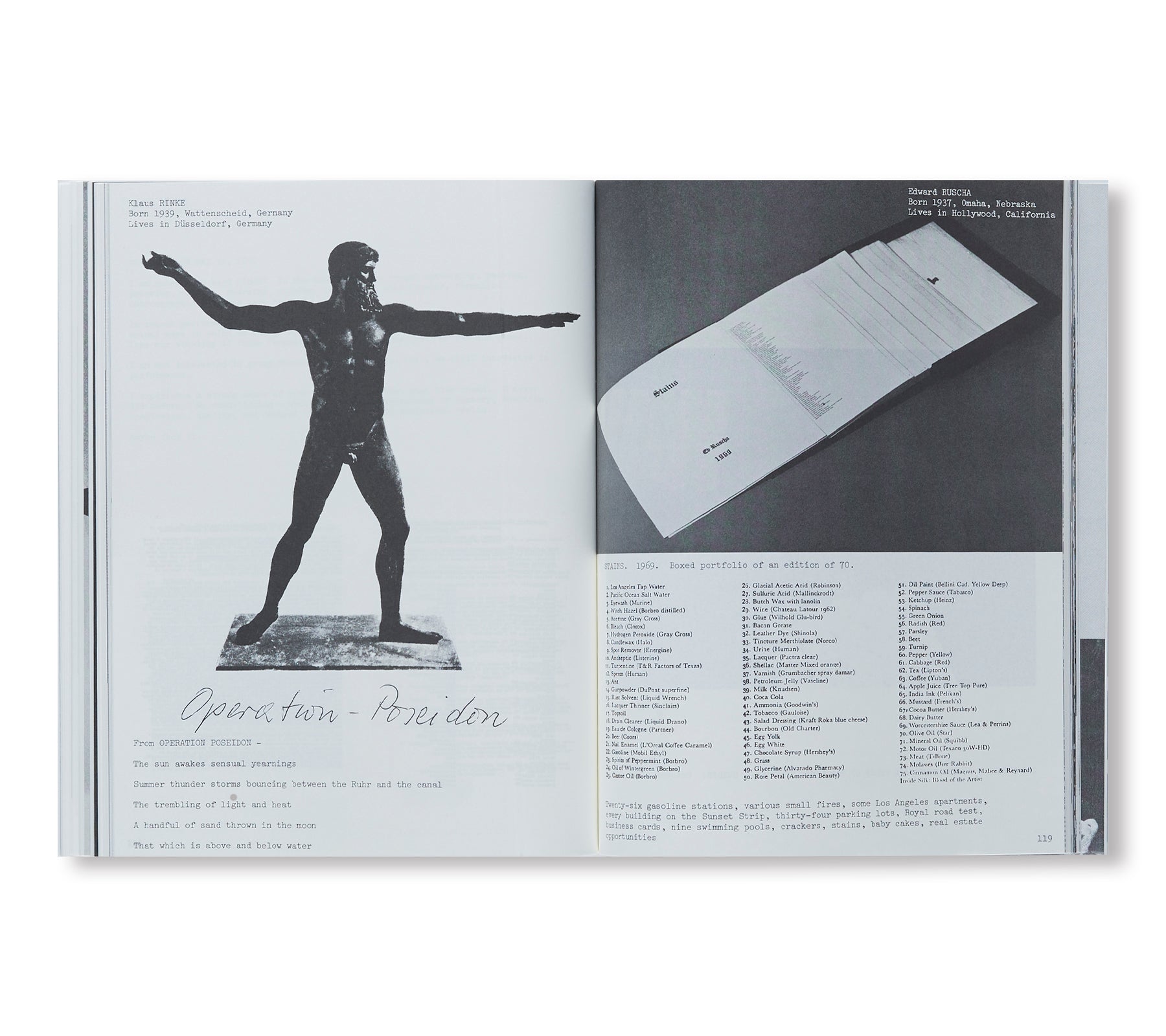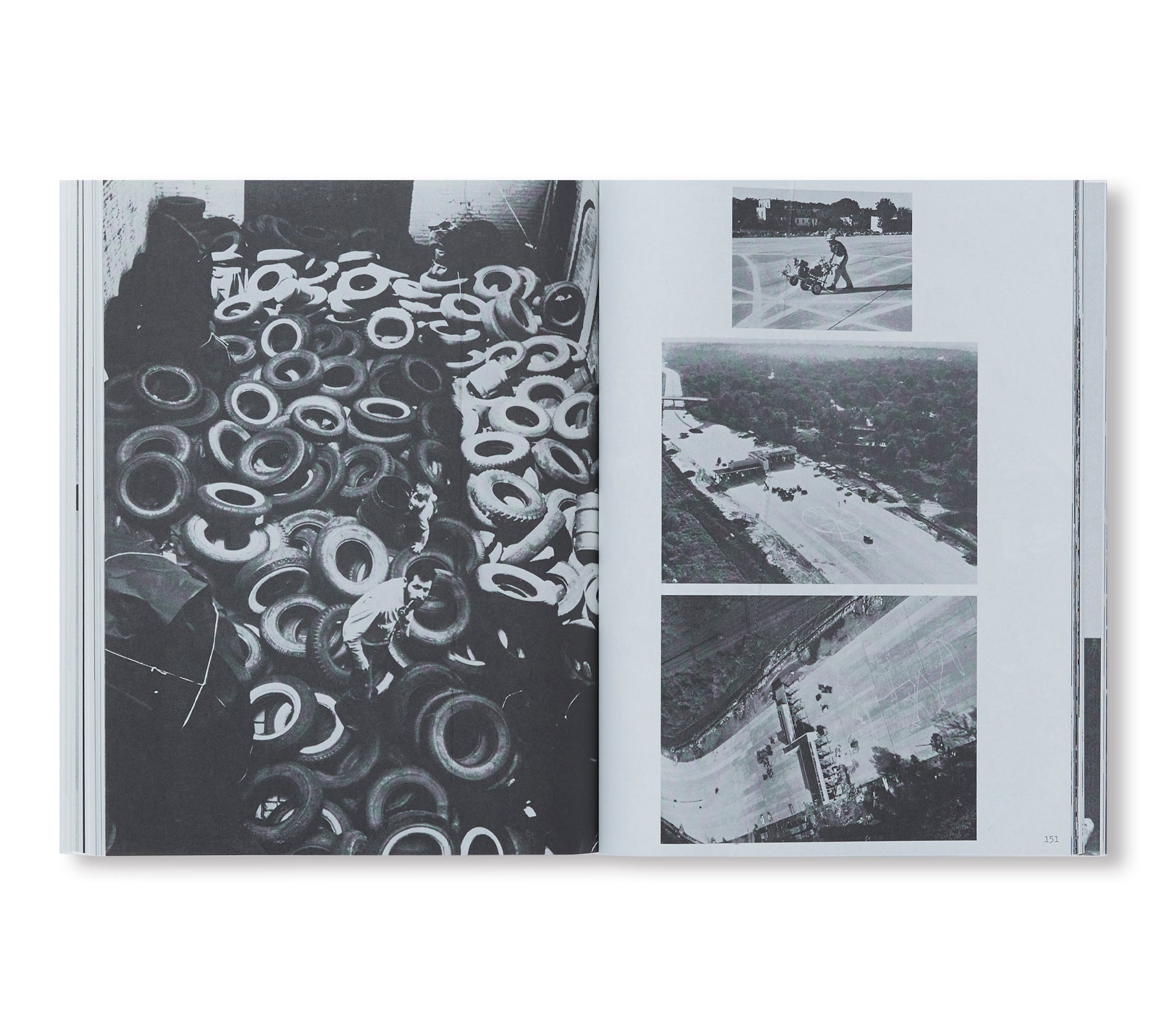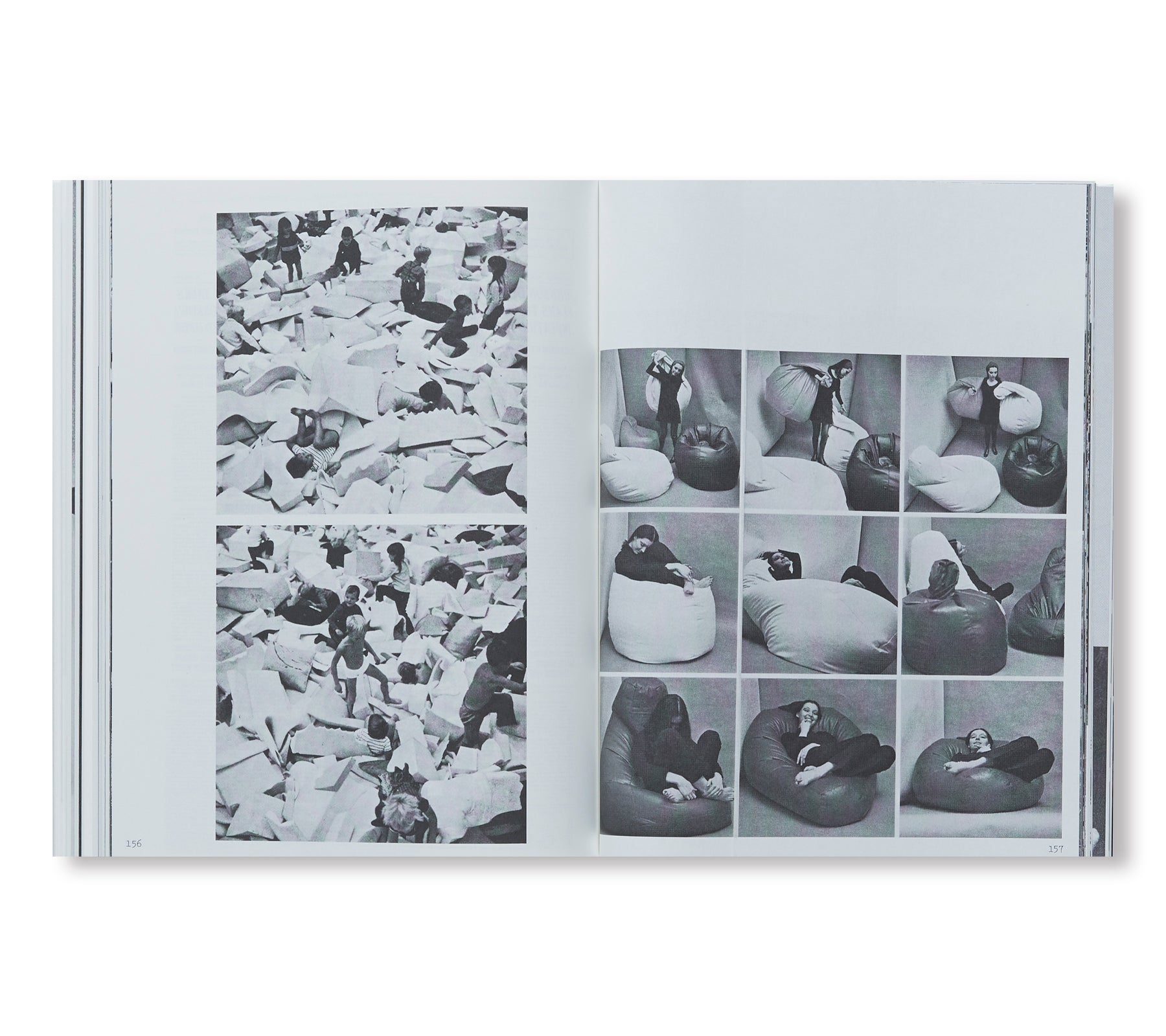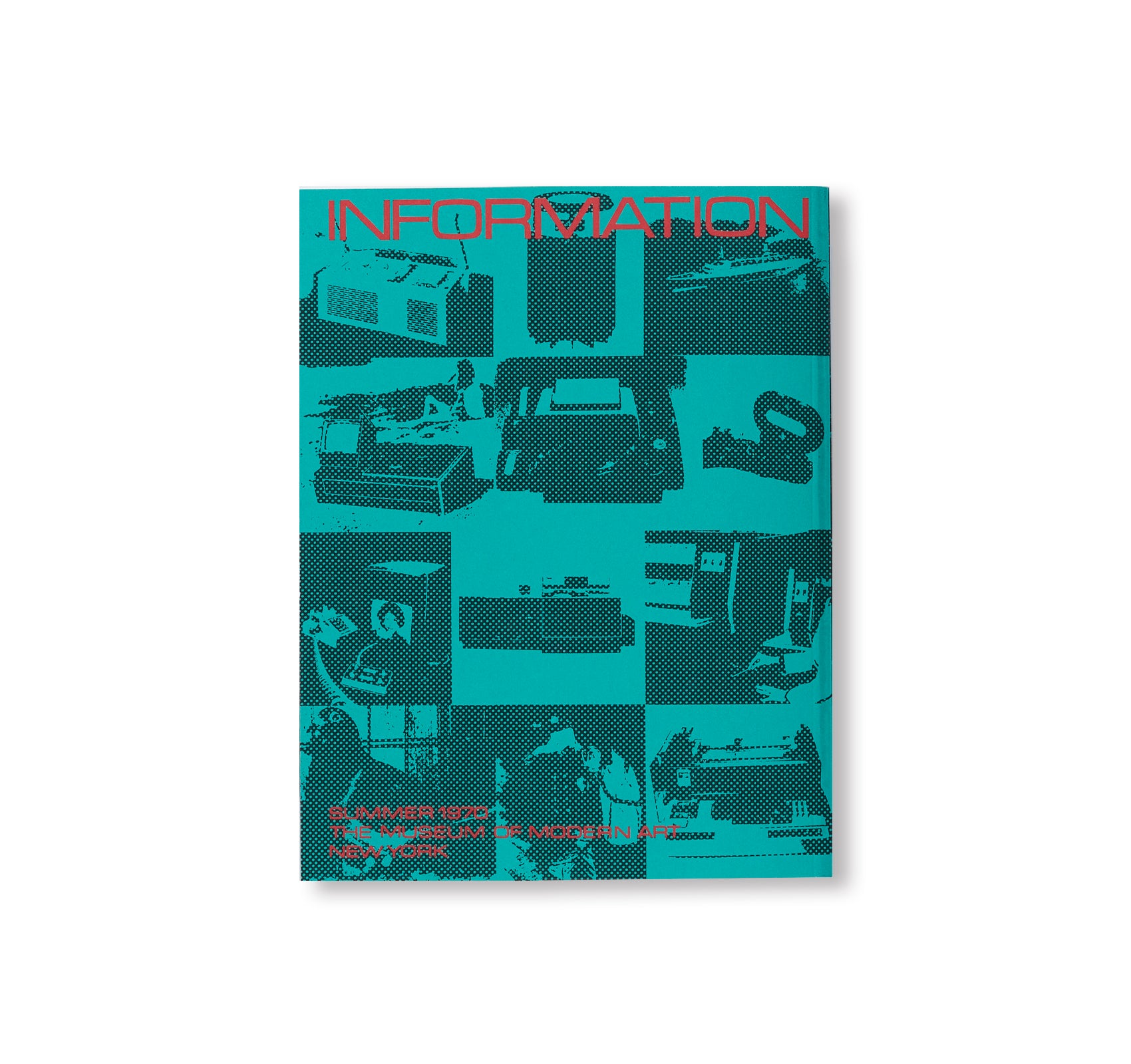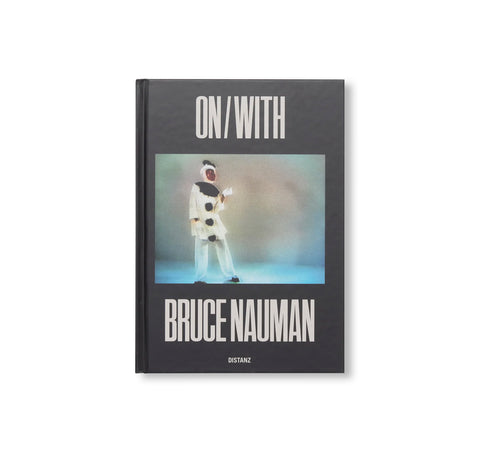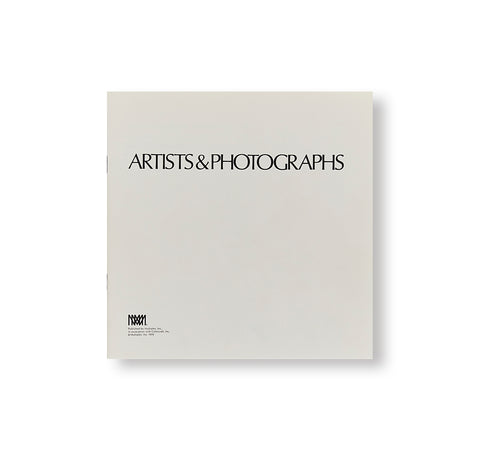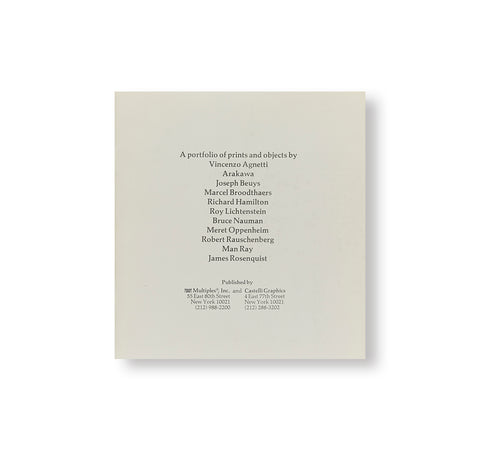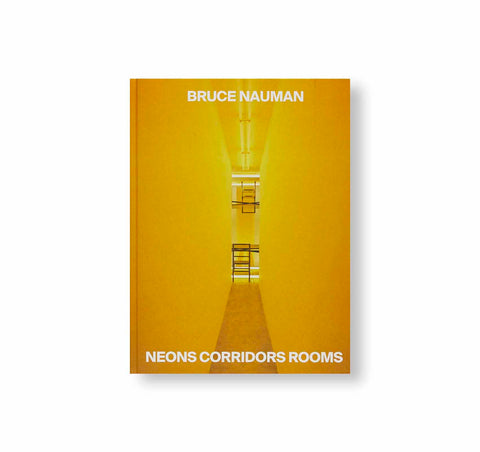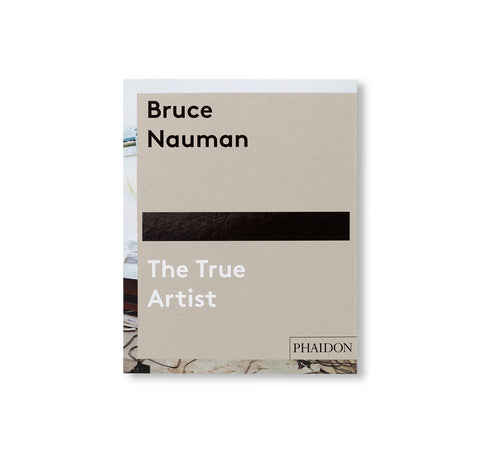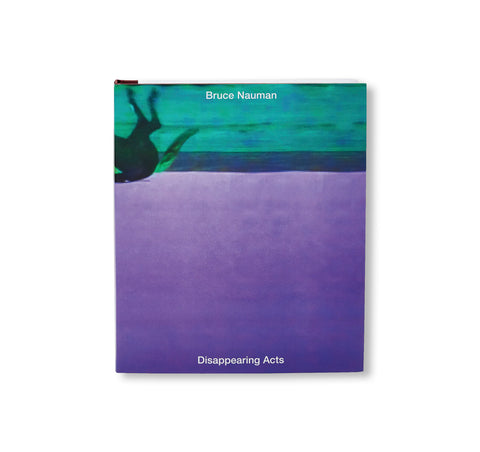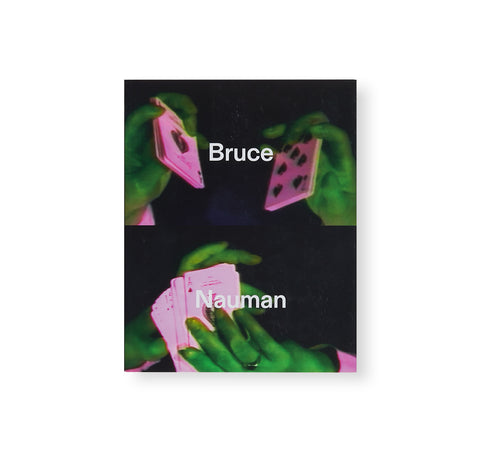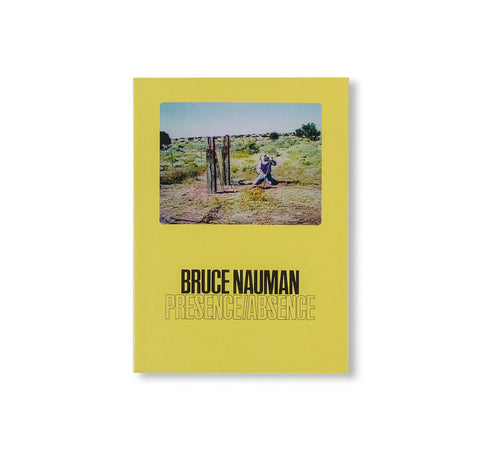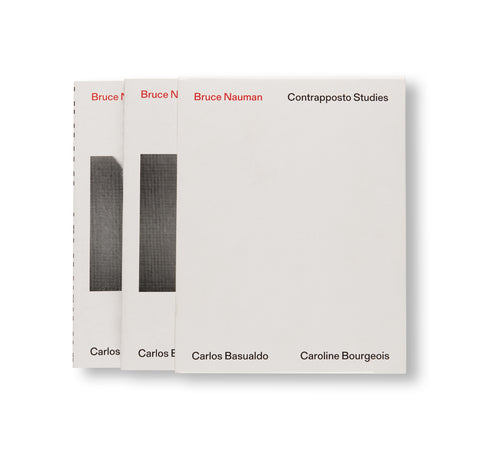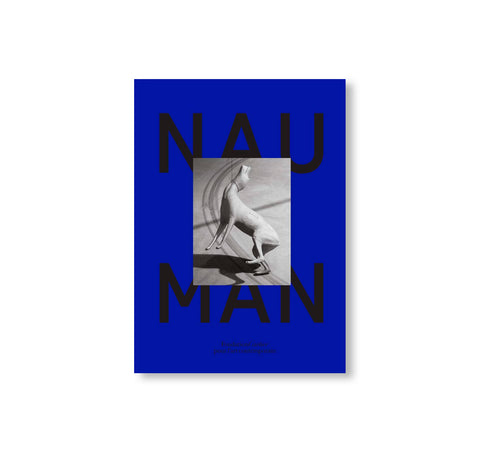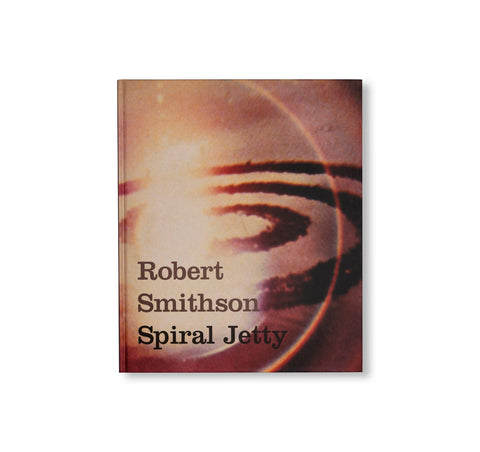INFORMATION by Kynaston McShine
1970年夏に「ニューヨーク近代美術館(MoMA)」で開催された展覧会「INFORMATION」に伴い刊行された作品集の復刻版。キナストン・マクシャイン(Kynaston McShine)のキュレーションにより開催されたこのグループ展は、コンセプチュアル・アートを網羅した初の包括的な展覧会の一つとして、今や伝説的な企画となっている。アメリカ人パフォーマーであるヴィト・アコンチ(Vito Acconci)、ドイツ人アーティストのハンス・ハーケ(Hans Haacke)、アメリカ人アーティストのロバート・スミッソン(Robert Smithson)やブルース・ナウマン(Bruce Nauman)など、15ヶ国・150名の作家を集め、時代を超越した活動とその可能性を探る展覧会であった。その作品群は「時代に広がる流動化と変化」に注目していることに触れており、参加アーティストは「アイデアを『物体』に拘束するのではなく、即時的に共有する」ことに関心を寄せているとマクシャインは述べている。本展では、テレビや郵便など、マスメディアという情報システムを引用し、鑑賞者の参加を誘うように直接語りかけていた作品が多くあった。
本書は単純に展覧会を記録したものではなく、書籍単体としての役割を果たしている。リーディングリストや批評家のルーシー・リパード(Lucy Lippard)による偶然性に基づいた索引を収録。また、未完成の作品や出展作品に関連するテキスト、ドローイング、図版、ダイアグラムなどが出展作家より寄稿されている。
長らく絶版状態となっていた図録の複製版として刊行された本書は、同美術館が開催した画期的とも言える展覧会を再検証し、コンセプチュアル・アートの前史に光を当てる。
In the summer of 1970, the Museum of Modern Art in New York mounted the now legendary exhibition Information, one of the first surveys of conceptual art. Conceived by MoMA’s celebrated curator Kynaston McShine as an ‘international report’ on contemporary trends, the show and attendant catalog together assembled the work of more than 150 artists from 15 countries to explore the parameters and possibilities of the emerging art practices of the era. Noting the participating artists’ attunement to the ‘mobility and change that pervades their time’, McShine underscored their interest in ‘ways of rapidly exchanging ideas, rather than embalming the idea in an “object”.’ Indeed, much of the work in the exhibition engaged mass-communications systems, such as broadcast television and the postal service, and addressed viewers directly, often encouraging their participation in return.
The catalogue, rather than merely document the show, functioned autonomously: it included a list of recommended reading, a chance-based index by critic Lucy Lippard, and individual artist contributions in the form of photographic documentation, textual description, drawings and diagrams – some relating to work in the exhibition and others to artworks as yet unrealized. This facsimile edition of the original Information catalogue, which has long been out of print, invites re-engagement with MoMA’s landmark exhibition while illuminating the early history of conceptual art.
